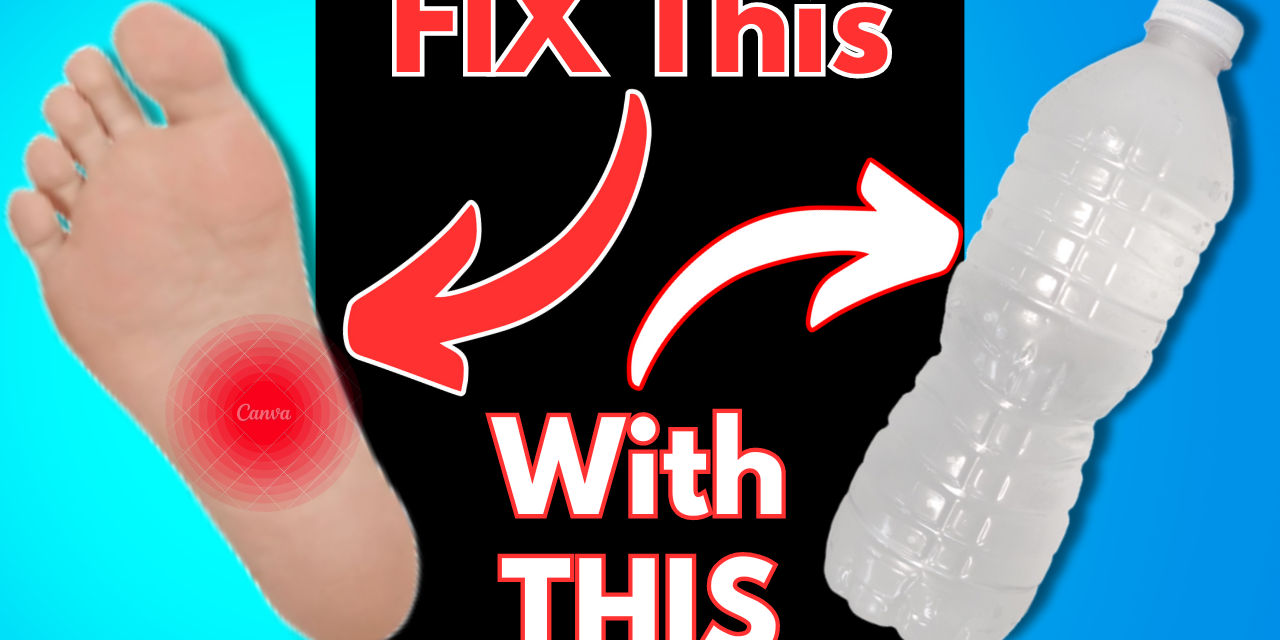How to Fix Heel Pain (NO MORE PLANTAR FASCIITIS)
Introduction
Heel pain can be a real pain in the…well, heel. If you’ve ever woken up in the morning and felt that sharp, stabbing pain in your heel, you’re not alone. This common condition, known as plantar fasciitis, can make everyday activities like walking or standing unbearable. But don’t worry, there’s hope! As a chiropractic expert, I’ve seen countless patients overcome heel pain with the right stretches and exercises. In this article, I’ll share some effective techniques to help you say goodbye to plantar fasciitis for good.
Understanding Heel Pain and Plantar Fasciitis
What is Plantar Fasciitis?
Plantar fasciitis is an inflammation of the plantar fascia, the thick band of tissue that runs across the bottom of your foot, connecting your heel bone to your toes. This condition is often caused by repetitive strain or overuse, leading to tiny tears in the fascia that result in pain and stiffness.
Common Causes of Plantar Fasciitis
Several factors can contribute to the development of plantar fasciitis, including:
– Overuse: Activities that put a lot of stress on the feet, like running or standing for long periods.
– Poor Footwear: Shoes that lack proper support or cushioning.
– Foot Structure: Flat feet or high arches can increase the risk.
– Age: Plantar fasciitis is more common in people aged 40-60.
– Weight: Excess weight puts extra pressure on the plantar fascia.
Symptoms of Plantar Fasciitis
The hallmark symptom of plantar fasciitis is a sharp, stabbing pain in the bottom of the heel, usually most intense with the first steps in the morning or after long periods of sitting. The pain might decrease with activity but can return after prolonged standing or exercise.
Benefits of Stretching and Exercise for Heel Pain
Improving Flexibility and Strength
Stretching and strengthening exercises can help improve the flexibility and strength of the muscles and tissues around your foot and calf, reducing strain on the plantar fascia.
Reducing Inflammation and Tension
Regular stretching can help reduce inflammation and tension in the plantar fascia, alleviating pain and preventing further damage.
Enhancing Blood Flow and Promoting Healing
Exercises that increase blood flow to the affected area can promote healing by delivering essential nutrients and oxygen to the tissues.
Preventing Future Episodes
Incorporating these exercises into your routine can help prevent future episodes of plantar fasciitis by keeping your muscles and tissues strong and flexible.
Manual Stretch
Description
The manual stretch is a simple yet effective way to directly stretch the plantar fascia and calf muscles.
Instructions
1. Sit on a chair and cross one leg over the other.
2. Use your hand to pull your toes back towards your shin.
3. Hold for 20-30 seconds and repeat 3 times on each foot.
Benefits
This stretch helps release tightness in the plantar fascia, reducing pain and improving flexibility.
Personal Anecdote
I remember a patient, Sarah, who came to me in tears because her heel pain was so severe she couldn’t even walk her dog. After a few weeks of consistently doing the manual stretch, she was back to her daily walks, pain-free!
Towel Stretch
Description
The towel stretch is another great way to stretch the calf and plantar fascia.
Instructions
1. Sit on the floor with your legs extended.
2. Place a towel around the ball of your foot.
3. Gently pull the towel towards you, keeping your knee straight.
4. Hold for 20-30 seconds and repeat 3 times on each foot.
Benefits
This stretch helps increase flexibility in the calf muscles and plantar fascia, relieving pain and preventing further injury.
Personal Anecdote
I always keep a towel in my gym bag for this stretch. It’s a lifesaver after a long run or a day on my feet. Just a few minutes can make a world of difference.
Wall Stretch
Description
The wall stretch targets the calf muscles and Achilles tendon, which can help reduce tension on the plantar fascia.
Instructions
1. Stand facing a wall with one foot in front of the other.
2. Place your hands on the wall for support.
3. Bend the front knee while keeping the back leg straight and heel on the ground.
4. Hold for 20-30 seconds and switch legs.
5. Repeat 3 times on each side.
Benefits
This stretch helps improve flexibility in the calf muscles and Achilles tendon, reducing strain on the plantar fascia.
Personal Anecdote
I often recommend the wall stretch to my patients who spend a lot of time standing or walking. It’s easy to do anywhere, and it provides quick relief.
Calf Raises
Description
Calf raises strengthen the calf muscles, providing better support for the foot and reducing strain on the plantar fascia.
Instructions
1. Stand with your feet shoulder-width apart.
2. Slowly rise onto your toes, then lower back down.
3. Repeat 10-15 times for 3 sets.
Benefits
Strengthening the calf muscles helps support the foot and reduces the risk of plantar fasciitis.
Personal Anecdote
Incorporating calf raises into my daily routine has made a huge difference in my foot health. It’s a simple exercise that delivers great results.
The Secret…Frozen Water Bottle
Description
Using a frozen water bottle for massage and pain relief is a simple and effective technique for reducing inflammation and soothing the plantar fascia.
Instructions
1. Freeze a water bottle.
2. Sit on a chair and place the frozen water bottle under your foot.
3. Roll the bottle back and forth under your arch for 10-15 minutes.
Benefits
This technique helps reduce inflammation and provides a soothing massage to the plantar fascia.
Personal Anecdote
I stumbled upon this trick during my own battle with plantar fasciitis. Rolling a frozen water bottle under my foot became my go-to evening ritual, and it significantly sped up my recovery.
Incorporating These Techniques into Your Daily Routine
Tips for Making Stretching a Habit
Consistency is key to overcoming heel pain. Here are some tips to help you make stretching a regular part of your routine:
– **Set a Schedule:** Aim to stretch at the same time every day, such as first thing in the morning or before bed.
– **Use Reminders:** Set reminders on your phone or leave notes around your home to prompt you to stretch.
– **Combine with Other Activities:** Stretch during TV commercials, while waiting for your coffee to brew, or during breaks at work.
Ideal Times for Stretching
Incorporate stretches into your daily routine at these ideal times:
– **Morning:** Stretching in the morning can help wake up your muscles and set a positive tone for the day.
– **During Breaks:** Take short breaks throughout the day to stretch, especially if you sit for long periods.
– **Before Bed:** Stretching before bed can help relax your muscles and improve sleep quality.
Combining These Techniques with Other Foot Care Practices
For the best results, combine stretching with other foot care practices, such as:
– **Proper Footwear:** Wear shoes that provide good support and cushioning.
– **Orthotics:** Consider using custom orthotics to support your arches and reduce strain on the plantar fascia.
– **Rest and Ice:** Rest your feet and apply ice packs to reduce inflammation.
When to Seek Professional Help
Signs That Indicate You Should Consult a Chiropractor
While stretching can help alleviate heel pain, there are times when professional help is necessary. Seek a chiropractor if you experience:
– Severe or persistent heel pain.
– Numbness or tingling in your feet.
– Limited range of motion that doesn’t improve with stretching.
– Pain that interferes with your daily activities.
Importance of a Personalized Treatment Plan
A chiropractor can provide a personalized treatment plan that addresses the root cause of your heel pain. This might include spinal adjustments, soft tissue therapy, and specific exercises tailored to your needs.
Conclusion
Heel pain, especially from plantar fasciitis, can be incredibly frustrating. But with the right stretches and exercises, you can alleviate the pain and prevent it from coming back. Remember to be consistent, listen to your body, and seek professional help if needed. Incorporate these techniques into your daily routine, and you’ll be on your way to a pain-free life.
Call to Action
Ready to put an end to heel pain? Share this article with friends and family who might benefit, and don’t hesitate to reach out for a consultation with a chiropractor. Together, we can keep your feet healthy and pain-free!





